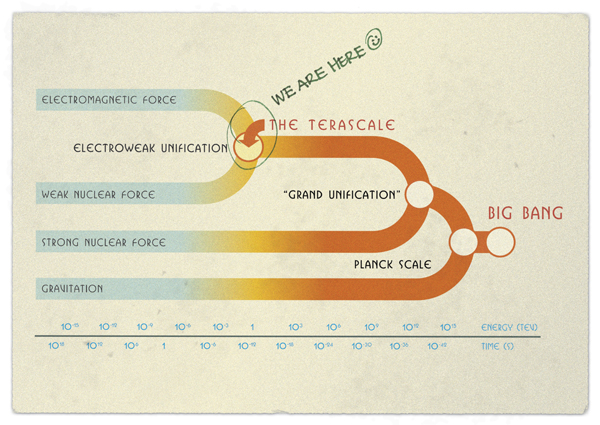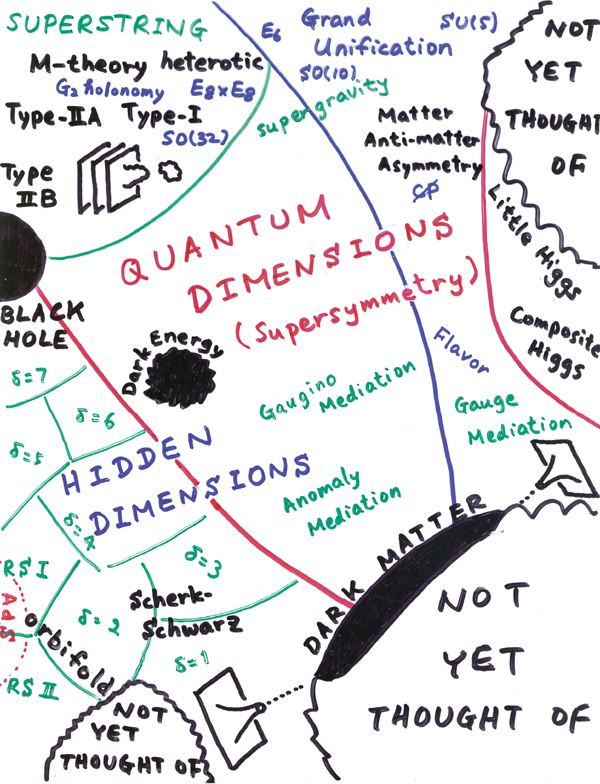
Physics 610 will cover the following topics
in Introduction to Electroweak Symmetry Breaking:
- Introduction to the elementary particles and interactions
- The Standard Model
- Electroweak Symmetry Breaking
- Precision Tests of the Standard Model
- Problems with the Standard Model
- Discovery and Measurements of the Higgs Boson
- Extensions to the Standard Model
- Experiments with Hadron Colliders
- Experiments with Lepton Colliders
These topics cover the important issues
in particle physics research related to electroweak symmetry breaking.
Throughout the course, the interplay between
theory and experiment will be emphasized.
Instructor:
Prof. Jim Brau
541-346-4766
414B Willamette
(enter through 414 Willamette)
jimbrau at uoregon.edu
Class Hours: T/Th 10:00 am - 11:50 am
Classroom: 318 Willamette
Office Hours: M/W 10 am
Physics 610 web page: http://physics.uoregon.edu/~jimbrau/ph610-14f

PRIMARY STUDY MATERIALS:
Recent experimental results
Measurement of the Higgs boson mass from the H -> gamma gamma and H -> ZZ* -> 4 leptons channels with the ATLAS detector using 25 fb-1 of pp collision data
ATLAS Collaboration
arXiv:1406.3827 (2014)
Updated coupling measurements of the Higgs boson with the ATLAS detector using up to 25/fb of proton-proton collision data
ATLAS Collaboration
ATLAS-CONF-2014-009 (2014)
Evidence for the spin-0 nature of the Higgs boson using ATLAS data
ATLAS Collaboration
Phys. Lett. B 726 (2013) 120
Precise determination of the mass of the Higgs boson and studies of the compatibility of its couplings with the standard model
The CMS Collaboration
CMS PAS HIG-14-009 (2014)
Discovery experimental results
A Particle Consistent with the Higgs Boson Observed with the ATLAS Detector at the Large Hadron Collider
The ATLAS Collaboration
Science 338, pp. 1576-1582 (2012).
Observation of a new particle in the search for the Standard Model Higgs boson with the ATLAS detector at the LHC
The ATLAS Collaboration
Phys. Lett. B 716, 1 (2012)
http://arxiv.org/abs/1207.7214
A New Boson with a Mass of 125 GeV Observed with the CMS Experiment at the Large Hadron Collider
The CMS Collaboration
Science 338, 1569-1575 (2012).
Observation of a new boson at a mass of 125 GeV with the
CMS experiment at the LHC
The CMS Collaboration
Phys. Lett. B 716, 30 (2012)
http://arxiv.org/abs/1207.7235
Theory
Introduction to Electroweak Symmetry Breaking
Sally Dawson
Lectures given at the XIII Mexican School of Particles and Fields, 2-11 October, 2008, Sonora, Mexico
AIP Conf.Proc.1116:11-34,2009
http://arxiv.org/abs/0812.2190
Unanswered Questions in the Electroweak Theory
Chris Quigg
Ann.Rev.Nucl.Part.Sci.59:505-555,2009
http://arxiv.org/abs/0905.3187
Unanswered Questions in the Higgs Bosons, Electroweak Symmetry Breaking, and the Physics of the Large Hadron Collider
Chris Quigg
Contemp.Phys.48:1-11,2007
http://arxiv.org/abs/0704.2045
Electroweak Symmetry Breaking: status/directions
Alex Pomarol
PoS ICHEP 2012 (2013) 030
Supersymmetry in Elementary Particle Physics
Michael Peskin
Lectures presented at the 2006 TASI summer school
http://arxiv.org/abs/0801.1928
Beyond the Standard Model
J. Lliopoulos
Lectures presented at 2007 European School of High-Energy Physics
http://cdsweb.cern.ch/record/1143385/files/p139.pdf
Dark Matter and Particle Physics
Michael Peskin
J.Phys.Soc.Jap.76:111017,2007
http://arxiv.org/abs/0801.1928
Secondary Study Materials:
The Anatomy of Electroweak Symmetry Breaking I: The Higgs Boson in the Standard Model
Abdelhak Djouadi
Phys.Rept.457:1-216,2008
http://arxiv.org/abs/hep-ph/0503172
The Anatomy of Electro-Weak Symmetry Breaking. II: The Higgs bosons in the Minimal Supersymmetric Model
Abdelhak Djouadi
Phys.Rept.459:1-241,2008
http://arxiv.org/abs/hep-ph/0503173
Beyond the Standard Model : supersymmetry
I. Antoniadis
Lectures presented at 2008 European School of High-Energy Physics
http://cdsweb.cern.ch/record/1183648/files/p157.pdf
Particle Data Group Tables and Reports
http://pdg.lbl.gov/
Grades will be based on homework problem sets, a mid-term exam and
a final exam.
This course is a one semester stand-alone course, intended for students
with an interest in the underlying theoretical basis of
collider experiments at the energy frontier. Students should have
mastered undergraduate courses on
- Modern physics
- Basic quantum mechanics
- Relativistic mechanics




